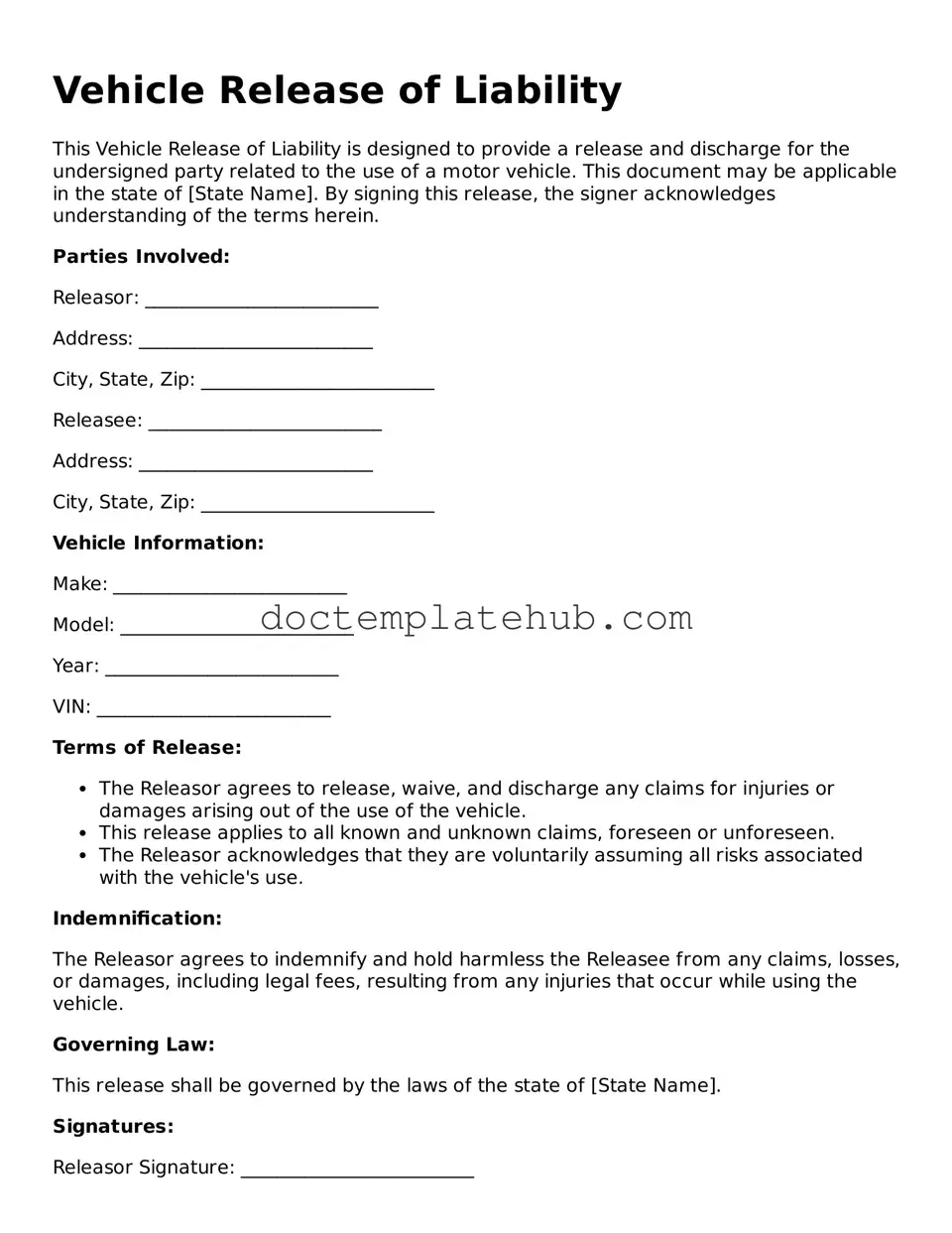What is a Vehicle Release of Liability form?
A Vehicle Release of Liability form is a legal document that protects a vehicle owner from liability for accidents or damages that occur after they have sold or transferred their vehicle to another party. By signing this form, the new owner assumes responsibility for the vehicle, thereby releasing the previous owner from any future claims related to that vehicle.
Why should I use a Vehicle Release of Liability form?
Using this form is important for both the seller and the buyer. It provides clear documentation that the vehicle has been sold and that the seller is no longer responsible for any issues that may arise after the sale. This can help prevent disputes and protect the seller from potential legal claims.
When should I complete a Vehicle Release of Liability form?
You should complete the form at the time of the vehicle sale or transfer. It is best to fill it out before the buyer takes possession of the vehicle. This ensures that both parties have a record of the transaction and understand their responsibilities moving forward.
Who needs to sign the Vehicle Release of Liability form?
The form must be signed by both the seller and the buyer. The seller confirms that they are transferring ownership and releasing liability, while the buyer acknowledges that they accept responsibility for the vehicle.
What information is required on the form?
The form typically requires the following information: the names and addresses of both the seller and buyer, the vehicle's make, model, year, and VIN (Vehicle Identification Number), the sale date, and the sale price. Both parties should ensure all information is accurate before signing.
Is the Vehicle Release of Liability form legally binding?
Yes, once both parties sign the form, it becomes a legally binding document. It serves as proof that the seller is no longer liable for the vehicle, and it can be used in court if any disputes arise regarding the transaction.
Do I need to have the form notarized?
Notarization is not typically required for a Vehicle Release of Liability form, but it can add an extra layer of authenticity. Some states may have specific requirements, so it's a good idea to check local laws or consult with a legal professional if you're unsure.
What happens if I don’t use a Vehicle Release of Liability form?
If you do not use the form, you may remain liable for any accidents or damages that occur after the sale. This could lead to legal claims against you, even if you no longer own the vehicle. It is always best to have clear documentation to protect your interests.
Where can I obtain a Vehicle Release of Liability form?
You can often find a Vehicle Release of Liability form online through state DMV websites or legal document preparation services. Ensure you select a form that complies with your state's requirements to ensure its validity.
